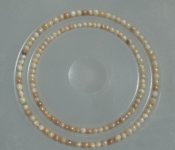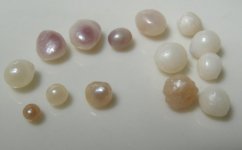FrenchPearl
Member
- Joined
- Feb 9, 2013
- Messages
- 155
Hello everybody,
After reading the story of the beautiful pendant pearl of kyratango, I could not resist to go back to ebay to do some treasure hunting / pearl rescue operation ��
I have been looking for natural seed pearls at a reasonnable price for a while.
Those were sold as "natural seed pearls - old necklace" , nobody bidded but me. What do you think ? They look dirty to me, but legit. I don't have them yet (on their way), so here are the pictures from the seller.
Your opinion on natural or not is welcomed ? And anything you could tell me about the necklace clasp / style
(Will try candling when they arrive, but they seem so small, not sure it will work. By the way, i don't have the size, but i estimate 2 mm)
Thanks in advance
Sophie
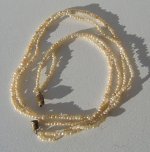
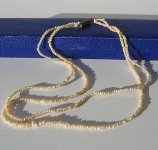
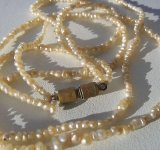
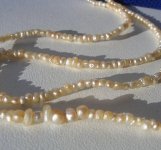
After reading the story of the beautiful pendant pearl of kyratango, I could not resist to go back to ebay to do some treasure hunting / pearl rescue operation ��
I have been looking for natural seed pearls at a reasonnable price for a while.
Those were sold as "natural seed pearls - old necklace" , nobody bidded but me. What do you think ? They look dirty to me, but legit. I don't have them yet (on their way), so here are the pictures from the seller.
Your opinion on natural or not is welcomed ? And anything you could tell me about the necklace clasp / style
(Will try candling when they arrive, but they seem so small, not sure it will work. By the way, i don't have the size, but i estimate 2 mm)
Thanks in advance
Sophie




Last edited:


